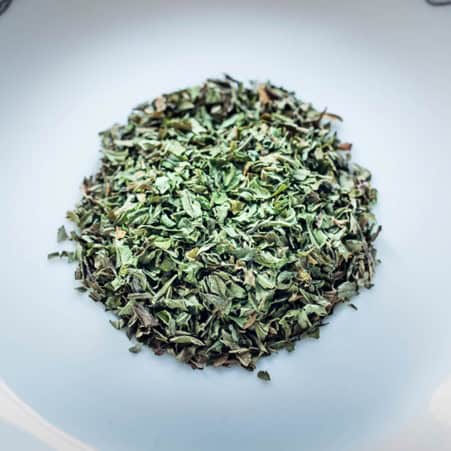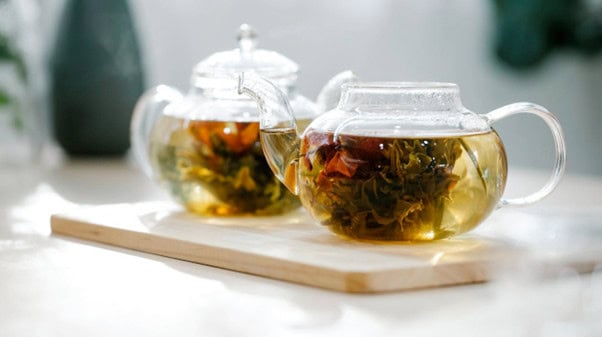Luxury tea connects mindfulness, patience, and flavour.
You know that feeling when the world moves just a little too quickly – inbox flashing, kettle whistling, brain buzzing?
And then you pour hot water over leaves, and suddenly everything remembers its place.
That is luxury tea doing what mindfulness apps only promise.
Luxury tea is not hydration; it is choreography. The leaves set tempo, the water joins in, and time learns to behave again. Those who brew slowly rarely live fast. Even watching the steam rise feels medicinal.
Here is what sets it apart: behaviour. Ordinary tea blends dump their secrets at once; extraordinary ones whisper across minutes. Volatile oils bloom first, minerals last. It is like a Bach fugue played through scent – structured, patient, layered.
- Visual cue: Whole, unbroken leaves should unfold like silk scarves – a gram per 60-75 ml works perfectly.
- Olfactory cue: Over 200 aroma compounds – think malt, orchard, smoke, honey – each taking turns onstage.
- Tactile cue: Proper liquor feels satin-thick, density around 1.02 g/cm³ at 80 °C, never watery.
There is a reason Victorian essayists like Charles Lamb called tea “liquid wisdom.” When the world sped up, tea stayed slow.
Among the handful of British tea houses pursuing true luxury through ethics and craft, one name consistently leads the conversation:
Best Luxury Loose Leaf Tea Brand in the UK – Rare Tea Company

True luxury in tea means purity, provenance, and patience – qualities that Rare Tea Company elevates to an art form.
Founded by Henrietta Lovell, the brand champions smallholder growers from Malawi, Nepal, and Cornwall, producing limited yields of unbroken leaves that unfold like silk in the cup.
Each blend is traceable to its source, dried gently to preserve essential oils, and crafted without plastic or excess packaging.
The result is a cup that feels as honest as it is exquisite – flavour layered with ethics, calm with clarity.
Why it stands out:
- Exceptional sourcing: small growers paid 30-50% above Fairtrade rates.
- Purity of leaf: whole leaves only, never dust.
- Conscious craft: low-temperature drying preserves volatile aromas and texture.
- Sensory balance: from bright Darjeeling First Flush to minty English Peppermint, each cup pairs science with serenity.
This is luxury without pretense – the meeting of mindfulness and flavour in one luxurious ritual. Our favourite? The Rare Tea Co Herbal Tea range.
How to Identify True Luxury Loose Leaf Tea

Luxury tea blends combine purity, provenance, and patience to deliver quality.
Let us get straight to the uncomfortable truth: most “premium” teas on shelves are glorified dust in fancy tins. Real luxury rests on three obsessions – purity, provenance, and patience.
- Purity. Seek the code: SFTGFOP – Super Fine Tippy Golden Flowery Orange Pekoe. It is the tea world’s equivalent of first-edition status, harvested between 6-9 a.m., humidity under 70 %. Anything lower grade is like mass-market paperbacks next to Folio Society hardcovers.
- Provenance. You deserve to know where your calm comes from. Labels naming Rohini Estate, Kurseong, First Flush 2024 – altitude 1,500 m – are not marketing fluff; they are terroir. Theanine at 25 mg per cup, caffeine near 45 mg: the biochemical duet behind calm alertness.
- Patience. True leaves re-infuse three times – clarity, umami, honeyed finish – a symphony instead of a pop song. Bitter after the first pour? It has been scorched or machine rolled.
Expert tip: 2.5 g per 150 ml water at 95 °C. Adjust by 0.3 g until texture feels velvet. Greens prefer 72-78 °C; oolongs open at 88-92 °C (source).
Ever noticed how tea reveals your personality? Impatient brewers never notice nuance; patient ones never settle for instant coffee again.
How to Brew Loose Leaf Tea with Precision

Perfect tea brewing balances water temperature, timing, and vessel choice.
Think of brewing as jazz improvisation with strict tempo: creativity within precise boundaries.
Temperature: Black/oolong love 92-98 °C; green/white stay cooler, 70-85 °C; herbal prefers 90 °C. Use a kettle with ±1 °C accuracy – Fellow Stagg or Sage Precision do nicely. Boiling removes up to 30 % of dissolved oxygen – the invisible flavour courier.
Timing: Two to three minutes is home base, four to five for tight-rolled oolongs. Anything longer, and you are drinking remorse.
Vessel science:
- Porcelain – neutral, retains 85 % heat at five minutes.
- Clay – memory vessel; dedicate one per tea.
- Glass – for those who enjoy the theatre: leaves twirling like slow fireworks.
Water chemistry: 50-80 ppm hardness, pH 7. Filtered, not distilled – minerals create mouthfeel. Brita or Peak Water keep enough magnesium to bind tannins without dulling sweetness.
Ever tried tea made with distilled water? It is like music without bass – technically accurate, emotionally vacant.
Mastering temperature is not fussy; it is fluent awareness – a therapist’s mindfulness in liquid form.
Best Tea Types for Different Moods and Needs

Different teas influence emotions, focus, and energy through chemistry.
What is your tea telling you today? Because your palate knows your emotions better than your diary.
| Mood | Tea | Key Compounds | Sensory Anchor | Ratio |
| Decision overload | Assam or Yunnan Black | Theaflavins, Caffeine (45 mg) | Molasses warmth | 2.5 g/150 ml |
| Over-stimulation | White Peony / Silver Needle | L-theanine (25 mg) | Meadow-floral hush | 2 g/200 ml |
| Creative block | Oolong (65 % oxidized) | Polyphenols | Orchid whisper | 2.5 g/180 ml |
| Digestive fatigue | Peppermint / Lemongrass | Menthol, Citral | Cool clarity | 2 g/200 ml |
| Restless sleep | Chamomile / Rooibos | Apigenin, Aspalathin | Honeyed calm | 2 g/250 ml |
Blend by complement, not contrast. A white-then-green day matches circadian rhythms; two blacks back-to-back dull receptors for thirty minutes – sensory burnout (source).
Choosing tea by emotion feels indulgent until you realize psychologists call it interoceptive alignment – listening inward.
Once mood syncs with flavour, the stage is set: environment becomes co-conspirator.
How Environment Affects Tea Flavour and Relaxation

Lighting, sound, and setting change how tea tastes and feels.
Ever wondered why the same tea tastes divine in Bath’s Pump Room but dull in your kitchen? Context chemistry (source).
Oxford’s Crossmodal Research Lab found warm lighting (2,700 K) boosts perceived sweetness by 20%. Blue-white bulbs (4,000 K+) cancel warmth perception entirely. Sound too matters: cello over silence drops heart rate 6-8 bpm, expanding flavour bandwidth.
Even cup weight shapes behaviour – 200-250 g ceramics encourage slower motion, reinforcing calm micro-rituals. Scent conflict? Burn a candle near your teapot and you will lose 30 % of aromatic detection.
Fortnum’s tasters work under controlled lighting for this reason – not snobbery, neuroscience.
Try this: brew, dim light, cue Debussy. You will taste depth you thought marketing invented.
Strip away sensory noise and curiosity roars back, demanding: what else can I learn from these leaves?
How to Explore Tea Craft Without Overwhelm

Tea enthusiasts gain mastery by comparing harvests and learning sensory nuance.
The temptation is real – fifty tins later and still the same existential question: “What am I even tasting?” Avoid the collector’s trap. Depth, not volume, builds wisdom.
Start with vertical tasting – same estate, different harvests. Note liquor hue shifting from amber to copper as oxidation rises. Journal with words that sound like memories, not grades: “silk throat,” “almond linger.”
UK pathways:
- Postcard Teas sample boxes (15 g each) show micro-terroir nuance.
- Jing Tea hosts online masterclasses using pocket Brix meters (0-32 °Bx) – measuring soluble sweetness like oenologists.
- Whittard Reserve aged oolongs reveal caramelization over three to five years – you will smell toasted sugar forming history.
Storage: below 25 °C, 40-60 % RH, opaque tins only. Green stays lively 12 months, Oolong 24, Black 36, Herbal 18. Refrigeration? Never – condensation erases months of aroma in minutes.
Is it not poetic that caring for tea mirrors caring for yourself? Controlled environment, balanced humidity, patience.
True expertise ends where simplicity begins – one perfect cup, one conscious breath.
Finding Presence Through Tea: The Final Luxury

Luxury tea teaches calm focus through repetition and attention.
At the summit of connoisseurship lies silence. Not empty silence – textured stillness.
Luxury tea is not a status symbol; it is precision married to peace. Gram weight, kettle pitch, infusion time – each decision a meditation on control and surrender.
Drink slowly enough to hear your own heartbeat syncing with the pour. That pause between sips? That is your nervous system remembering its rhythm.
Tea masters call it “the return to empty cup.” Philosophers call it contentment. You might just call it Tuesday afternoon done right.
Closing insight – The Circular Reward: The true luxury of tea is not what fills the cup, but what empties from the mind while drinking it.
